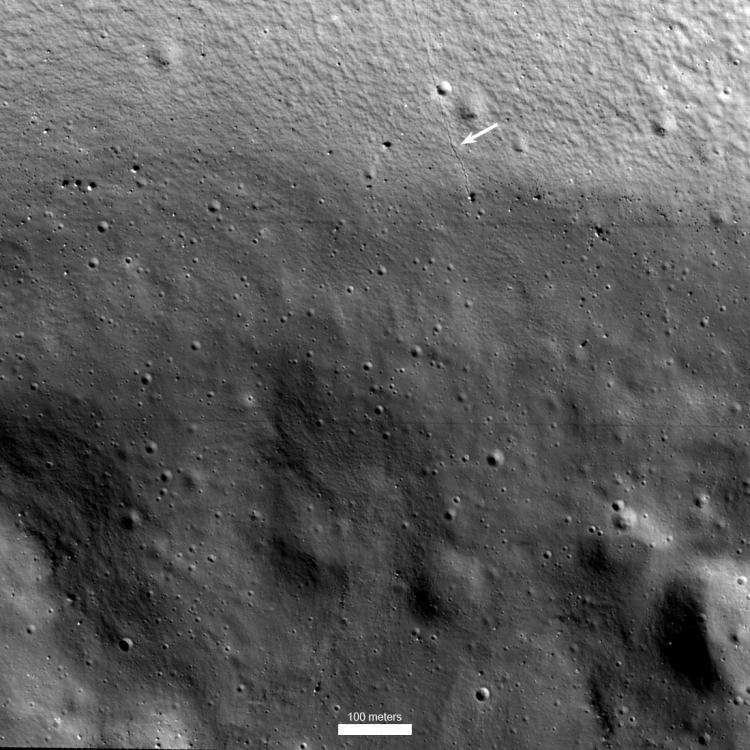
Where sunrays never reach: South Korea telescope captures shadow areas of Moon
The South Korean lunar orbiter Korea Pathfinder Lunar Orbiter (KPLO) called Danuri has taken the first photos of the dark regions of the Moon's poles using its ultra-sensitive ShadowCam camera.
The KPLO was launched into lunar orbit by the Korea Aerospace Research Institute in December 2022.
ShadowCam is one of six instruments which the telescope is equipped with. It is considered the "little brother" of the Narrow Angle Camera (NAC) that is installed on the Lunar Reconnaissance Orbiter (LRO).
The development of ShadowCam was funded by NASA and built by the Malin Space Science Systems (MSSS).
The camera will photograph, with a resolution of 2 meters per pixel, the permanently shadowed areas of the Moon.
This photo shows a shaded area in the Shackleton crater of the Moon. The image has a level of detail that has never been possible before. The base of the transparent wall of the Shackleton can be seen at the top of the photo, and the crater floor can be seen below. Also visible above is the imprint of a boulder about 16 feet (5 meters) in diameter that rolled down the crater wall.

The axis of rotation of the Moon is tilted by only 1.5 degrees, and there are practically no seasons on the Moon. Some parts of the latter are never illuminated by direct sunlight. However, due to its high sensitivity, ShadowCam can shoot in very low light conditions—and with weak reflections from other objects.
That's right! Thanks to that same sensitivity, the camera's matrix lights up every time the camera is pointed at an area that is directly illuminated by sunlight. Therefore, as Mark Robinson of Arizona State University's School of Earth and Space Exploration has pointed out, ShadowCam cannot show the rims of the crater, which are partially illuminated.
Scientists are sure that ShadowCam, by photographing the permanently shadowed areas near the Moon's poles, will help to get a lot of new data about the Earth's satellite. In particular, scientists will be able to map the surface of the Moon for use in future research when looking for chemical elements or substances with lower boiling points, such as hydrogen, helium or water.
- Related News
- The end of the Universe: 3 plausible theories of a global apocalypse
- Mutated bacteria resistant to drugs found on the ISS: What does this mean and why is it a problem?
- 4 flares erupted from Sun in rare event: the Earth may be hit by geomagnetic storm (video)
- 11 incredible satellite photos published on Earth Day
- NASA shows all of Ingenuity's flight trajectories in one video
- Could life exist on Saturn's moon Enceladus?
- Most read
month
week
day
- Once in a lifetime phenomenon: This year we will observe a star explosion that occurred 3,000 years ago 918
- iPhone 17 Plus will have smaller screen 793
- 5 best smartphones with IPS screens 765
- How DNA analysis helps to solve crimes and who can sell your DNA data and why: Interview with former FBI scientist Bruce Budowle 758
- Huge battery, IP68/IP69K and MIL-STD-810H certifications: Ulefone will present the Armor Pad 3 Pro tablet (photo) 739
- Sentry Enterprise presents first bank card with screen: How does it work? 620
- 5 original buildings with curious optical illusions (photos) 608
- What risks do crypto and digital currencies pose? Interview with Rasmus Nielsen 593
- How will new technologies change future of finance? Interview with director of Apricot Capital (video) 584
- Instead of destroying nearly 100,000 old iPhones, Canadian company sold them in China 576
- Archive
